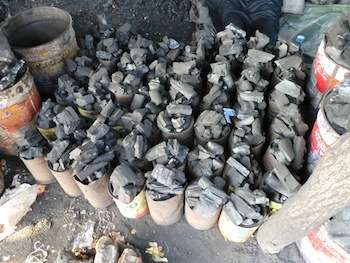The Ghana Energy Commission, in its latest report disclosed that the residential Biomass consumption in Ghana has reached an astonishing 86.6%.
According to the Ghana Energy Commission, level of biomass energy consumption in Ghana in 2023 is about 2,845.1 kilotons. Out of this total, households consume about 2,465.6 kilotons of the total figure while the closest consumer after the residential consumers is the industrial consumers, with about 276.9 kilotons. This implies the industrial sector which is a major consumer of energy in Ghana does not derive its energy source from biomass energy but from other sources of energy.
The use of biomass energy in the commerce and service sector is highly limited with about 102.6 kilotons of biomass energy being used in the commerce and service sector. Combining the biomass energy use by both the industrial sector and the commerce and service sector does not contribute up to 15% of the total biomass energy consumption. This implies paying more attention to the reduction of biomass use in the residential sector will contribute greatly to reducing the emission of carbon dioxide through biomass combustion in Ghana.
Meanwhile, controlling the level of biomass consumption and emission in Ghana is key to reducing the level of greenhouse emissions in Ghana. Ghana being one of the contributors to the fight against climate change, reducing household biomass consumption is key to winning the fight against biomass carbon production.
Biomass Energy In The Residential Sector In Ghana
Biomass energy in Ghana can be obtained from plants and animals and in Ghana biomass energy is mostly obtained from plant sources. The country has several forest areas in the northern and southern zones with the northern zones having more forest and woodland areas.
This forest and woodlands provide a major source of biomass energy used by residential units in Ghana. Charcoal and firewood are the main forms of biomass energy sources used in Ghana. Wood fuel is hardly used by nonresidential sectors in Ghana to generate energy as most industrial units generate energy through hydropower or gas-powered plants.
A few areas in Ghana also generate biomass energy from crop residues such as maize cobs and stalks, cassava residue, straws from yam, cocoyam, and rice. Groundnut shells and oil palm shells are also a source of biomass energy generated from plant residues. However, raw wood fuel (firewood) and processed wood fuel (charcoal) are the main biomass energy sources that households use in Ghana.

Data from the Ghana Energy Commission shows that the rural areas are the main producers of charcoal used as a source of energy in Ghana. The most known areas for the production of charcoal in Ghana are the Kintampo North District, Bole in the Bole District, and Atebubu in the Atebubu Amantin District.
Factors Contributing To High Biomass Energy
Biomass energy in Ghana is mostly used in residential areas due to the high cost of alternative sources of energy for households. Electricity and gas are the major alternatives to the use of charcoal and firewood as the sources of energy in residential units. However, the cost of electricity and gas in Ghana relative to the cost of wood fuel has contributed to a higher demand for biomass energy by households in Ghana.
Growing electricity tariffs imply households will incur higher costs in generating household energy for more pressing uses such as the generation of light, use of electronic appliances, etc. This implies households will want to reduce their electricity expenditure by using cheaper forms of fuel to generate household energy.
Liquefied Petroleum Gas (LPG) on the other hand seems to be a better alternative than electricity as a source of energy generation but limitations pertaining to availability and fast-increasing prices of LPG contribute to households preferring wood fuel as compared to LPG.
However, despite the high dependent of Ghanaians on biomass, legislations are in place to reduce the dependency on wood fuel as a source of energy due to its impact on the environment and associated global warming impact.
Meanwhile, the goal of reducing biomass (wood fuel) dependency will be greatly achieved if the cost of alternative energy for residential units (electricity and LPG) can be more attractive than the price of charcoal and firewood.
READ ALSO: Ghana’s Economic Turnaround: Inflation Falls to 23.1% Amid Strategic Policies























